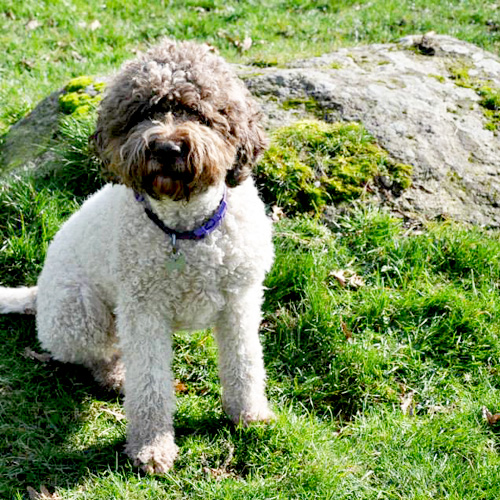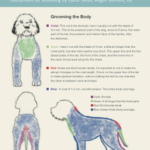Lagotto Romagnolo
history

Lagotto Romagnolo is an ancient Italian breed that was originally used as a hunting dog and water retriever. The breed’s own name comes from the Italian word “Lago” which means “lake”. Originating from the marshlands of Ravenna and the lowlands of Comacchio, which is in the sub-region of Romagna, Italy.
The breed’s roots are thought to go back at least to 1474 A.D. When the marshlands were drained towards the end of the 19th century and turned into arable land, the vast
flocks of waterfowl disappeared and the Lagotto needed to find a new purpose. With their highly tuned nose for searching things out, their keen senses and natural agility they have proven to be very efficient in truffle hunting and are the only dog bred for this purpose.
By the 1920’s the breed was diminishing and there seemed little interest in renewing this ancient breed, however in the 1970’s with just a few Lagotto’s remaining some Romagnan enthusiasts (Quintino Toschi, Prof. Francesco Ballotta, Dr. Antonio Morsiani and Lodovico Babini) decided to establish this dog as a recognized breed. In 1988 they established C.I.L (Club Italiano Lagotto), and in 1995 the breed was officially recognized by the F.C.I.
Lagotto Romagnolo Profile
Grooming
- The Lagotto does not require frequent bathing. They have hair rather than fur and there is very little shedding, which makes them a good choice for people with allergies. Their coat is best when kept at about 1 to 1.5 ” in length. Show dogs are trimmed down and left to grow out naturally before showing. The signature look of the Lagotto is the tight curls that fit the body. They are to be shown as a natural rustic looking dog with no blowing, fluffing or brushing out of the hair. For showing in the United States, the coat should appear in a rustic style and it should match the lines of the dog so that the curls are evident. The dog should have the appearance of a working dog that it is actually ready to start working! If clipped down, the coat will need about 3 months of growth to be ready to show. Otherwise, shaping can be performed before the shows.
- Hair on the ears should be trimmed around the edges to the leather. If the ear shows irritation and buildup of dirt and earwax, the hairs from the ear canal should be gently plucked out regularly. Some coats matt easier than others.
Links
“The PennHIP method has strong scientific foundation as the most effective hip screening tool available.” info.antechimagingservices.com/pennhip/
Orthopedic Foundation for Animals ofa.net
“Understand your dog’s health and increase its well-being.” mydogdna.com
Friends of LoH
Grass Roots Campaign aimed at raising awareness of cannabis toxicity in pets. potfreepet.com

